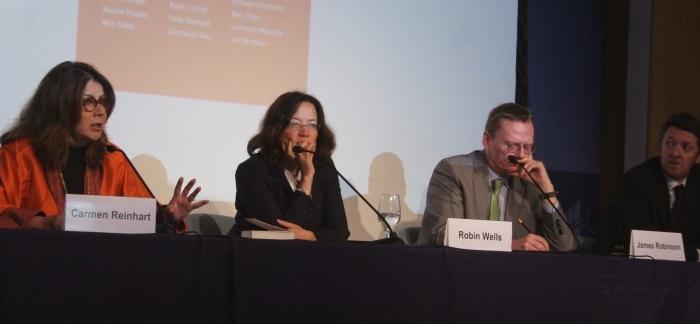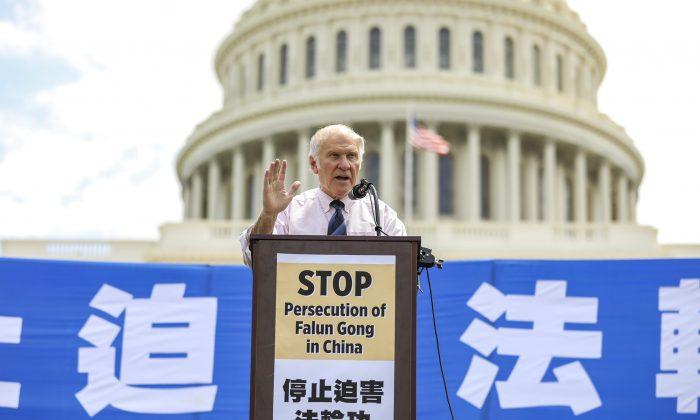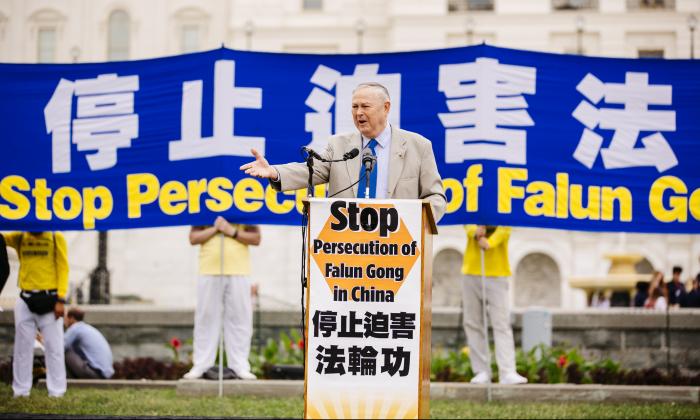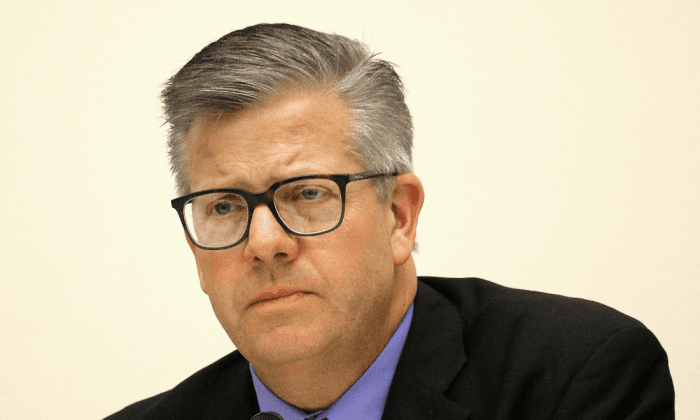WASHINGTON—The Occupy Wall Street (OWS) movement that began in New York’s Zuccotti Park surprised even its organizers in how much it resonated with the public. The movement spread across the country last fall and has become part of our political and cultural landscape.
On April 17, the Peterson Institute for International Economics hosted a discussion on the Occupy movement—its causes, how it relates to U.S. economic and political history, and the direction it may go.
The Peterson Institute—a research organization well-known for studies in international economic policy— is regarded as one of the few Washington think-tanks that is truly nonpartisan.
The four guest speakers had contributed papers to The Occupy Handbook, a compilation of essays on OWS by leading economists, journalists, and social scientists. The Handbook was released on the day of the event.
“The Occupy movement resonates with all sorts of people. It’s not just a bunch of kids on the street,” said John Cassidy, journalist for the New Yorker.
Trying to define the movement’s appeal is difficult. The Occupiers don’t see themselves as protesters, at least not in the usual sense.
David Graeber, who is widely credited with coming up with the slogan “We are the 99 percent,” says OWS shares much with anarchist principles, which may explain the oft-repeated comment made on the OWS refusal to issue demands. The reason is that Occupiers do not recognize the legitimacy and power of those to whom their demands would be made.
However, it’s a pretty good bet that anarchism has little to nothing to do with the appeal of OWS.
Graeber, a social anthropologist at the University of London, summed up the OWS message: “The American political order is absolutely and irredeemably corrupt, that both parties have been bought and sold by the wealthiest 1 percent of the population, and that if we are to live in any sort of genuinely democratic society, we’re going to have to start from scratch.”
In his essay, The Occupy Handbook, Graeber says this message “struck a profound chord in the American psyche.”
Surprisingly, OWS has even impressed Paul Volcker, former Federal Reserve chairman from 1979 to 1987. He expressed astonishment that so many high-level people would contribute to the Handbook, said editor Janet Byrne, who invited esteemed economists and other disciplines to participate. Volcker concluded his essay in the Handbook:
“Can it really be true that our government is for sale? I hope not. But the threat makes it worth occupying K Street.”
Inequality
The Occupiers look to the research of economists Emmanuel Saez and Thomas Piketty, who found that the top 1 percent of U.S. households comprise about two-thirds of all income gains during 2002–2007. While the incomes of the top 1 percent increased more than 10 percent a year when adjusted for inflation, the 99 percent saw annual increases of 1.3 percent. When the Great Recession hit from 2007 to 2008, the bottom 99 percent fell 6.9 percent, the greatest year-to-year decline since the Great Depression, according to Kathleen Maclay who interviewed Saez in the Handbook.
In the interview Saez says, “The 2008 economic crisis was largely the consequence of deregulated finance running amok.” The huge increase in income concentration from 2002 to 2007 was driven by profits accrued in the real estate and financial sectors made possible by deregulation. The financial-real estate bubble triggered the Great Recession.”
Why wasn’t the bubble buildup stopped before it could do harm?
Carmen Reinhart, from the Peterson Institute, said at the event that as the surge in asset prices continued, investors and policymakers became blind with overconfidence and thought, “This time is different” from other periods that ended badly after a boom. The financial crisis was essentially the same as past crises. The antecedents for financial crises include large capital inflows (“financial liberalization”) and a marked rise in indebtedness; it is facilitated by poor regulation of the financial industry, she said.
The chapter in the Handbook by Reinhart and Kenneth Rogoff is an encapsulation of their book, “This Time is Different: Eight Centuries of Financial Folly.”
“We need a much more skeptical approach to financial markets and financial institutions,” Cassidy said, reflecting an OWS perspective.
Banks have a critical societal role to play channeling savings into productive investments, Cassidy said. But how much capital is being used for productive investment and how much goes toward speculation? “Wall Street’s role in financing new businesses is a small portion of what it does,” he writes.
Many of the big banks have switched from meeting the capital-raising needs of their clients “into immense trading houses whose fortunes depend on their ability to exploit day-to-day movements in the markets.”
Cassidy says it’s hard to argue that the free market allocated capital in the most efficient way. He is confident we can reduce inequality without damaging efficiency.
Both Reinhart and Cassidy speak of the benefits of “financial repression,” when the banking sector was restrained during the 40 years after the Great Depression. The regulators and policy makers “placed limits on interest rates, prohibited deposit-taking institutions from issuing securities, and [prevented financial institutions from merging with one another],” Cassidy writes.
During this period, no major financial crisis occurred, and productivity and wages grew enabling tens of millions to enter the middle class. By contrast, from the 1980s till now, a period of deregulation, low taxes, and employment of financial innovations has coincided with financial blowups and stagnating living standards.
Political Polarization
Paul Krugman and Robin Wells argued in the Handbook that extreme income inequality led to extreme political polarization, which in turn is the “root cause of our polarized politics,” that explains the ineffective response once the financial crisis hit.
At the event, Wells used various time charts to demonstrate that the ideological differences between the Republican and Democrat parties have widened, with the Republican Party pulling further to the right in the last decade. There used to be substantial overlap between liberal Republicans, such as New York Sen. Jacob Javits and conservative Democrats, but today the most conservative Democrat is usually to the left of the most liberal Republican.
The ideological split has paralyzed meaningful government intervention, Krugman and Wells say. They conclude that today’s conservatives will reject outright any Keynesian view that government can play a useful role in fighting poverty and in monetary policy out of a generalized fear that any concession will lead to socialism.
OWS and Inclusiveness
James Robinson, Harvard professor of political science and economics, and author of “Why Nations Fail,” placed the Occupy movement in a historical context. When economic inequality led to oligarchical politics, for example, during the Gilded Age, Populist and Progressive movements then emerged to turn back the country to its democratic roots.
Robinson is optimistic that the same dynamic is operating today. He sees the economic gains in the U.S. economy being snapped up by the 1 percent; coinciding with the growing inequality in the nation’s political institutions. The result is a political climate that has once again become less inclusive and largely responsive to only those in a position to pay for political influence.
Forces now are coming forth “to create another backlash from outside traditional political parties [as the Populist and Progressive movements] in the form of the Occupy Wall Street movement.” He said society is “pushing back” against the oligarchic organization of the political system.
“Ultimately OWS may want to build bridges to sympathetic politicians in the mainstream political parties, many of whom object to the power that money has over politics,” Robinson says in the Handbook.













Friends Read Free